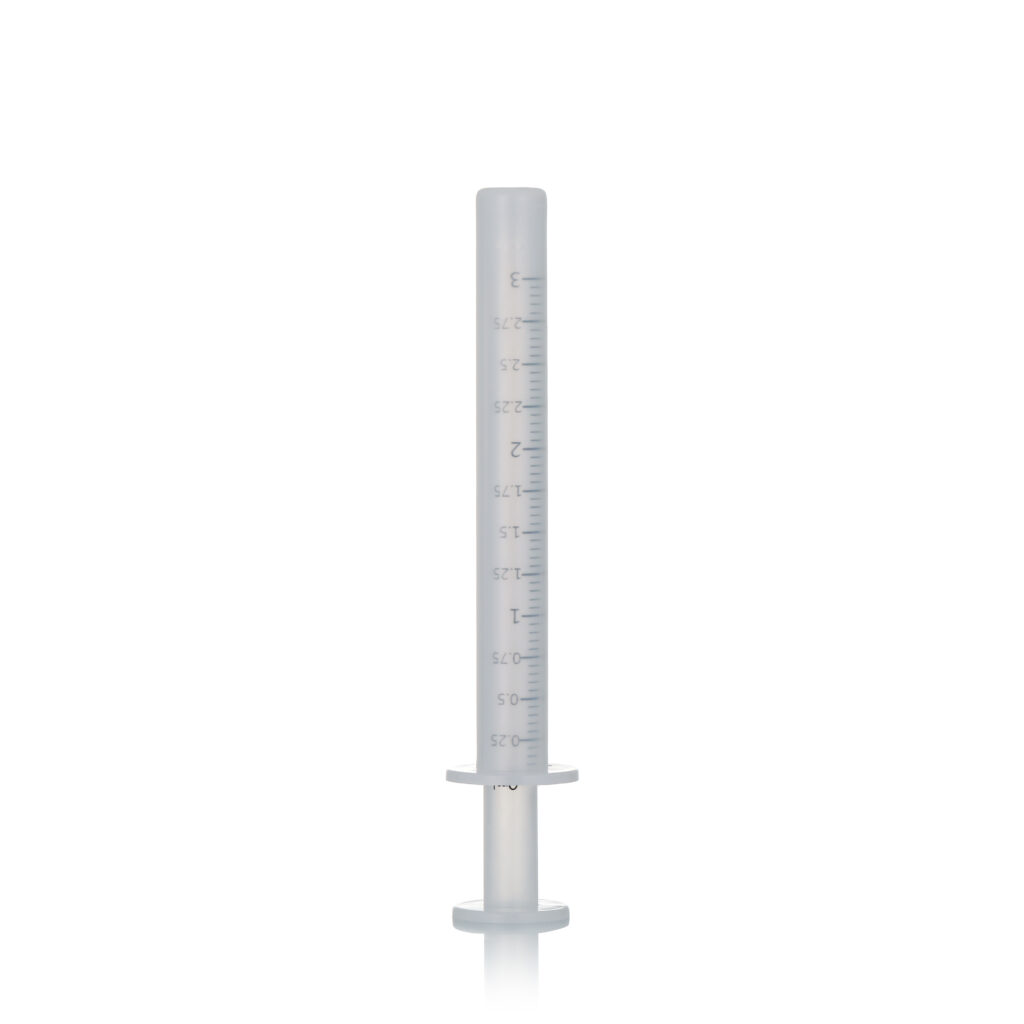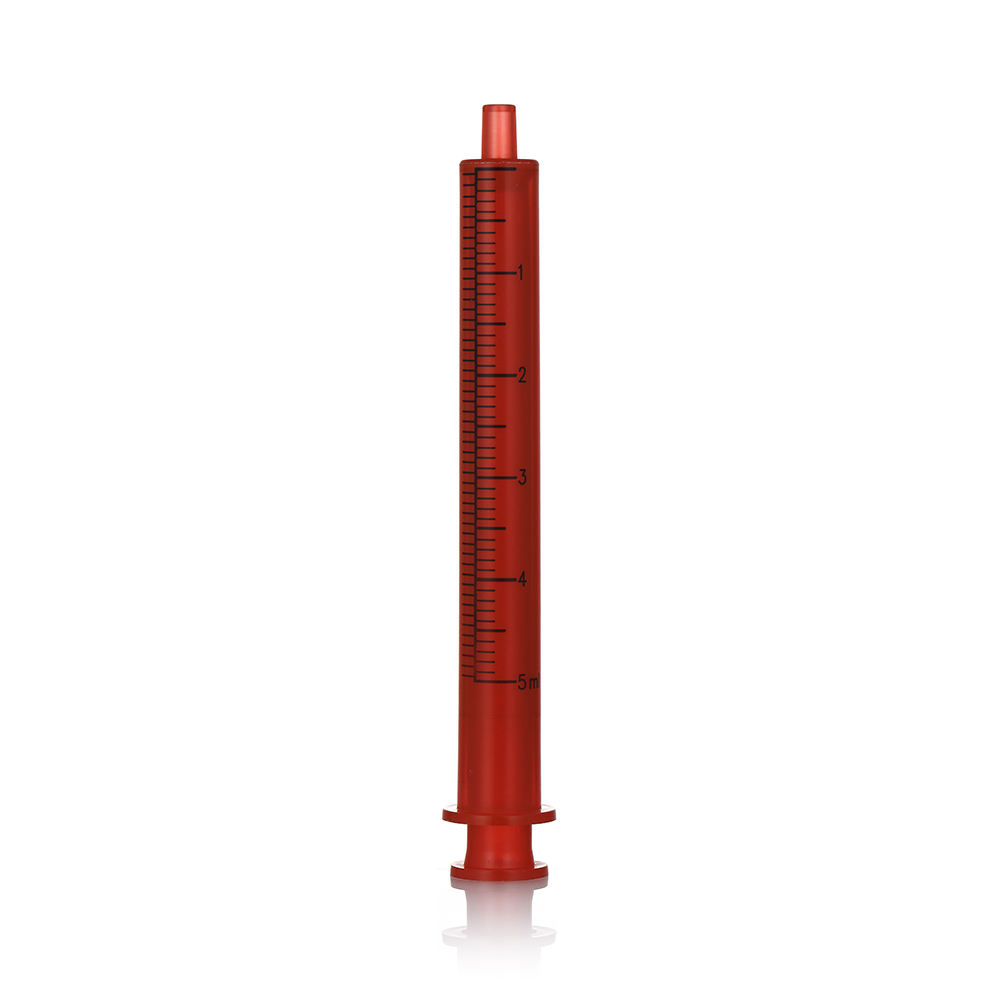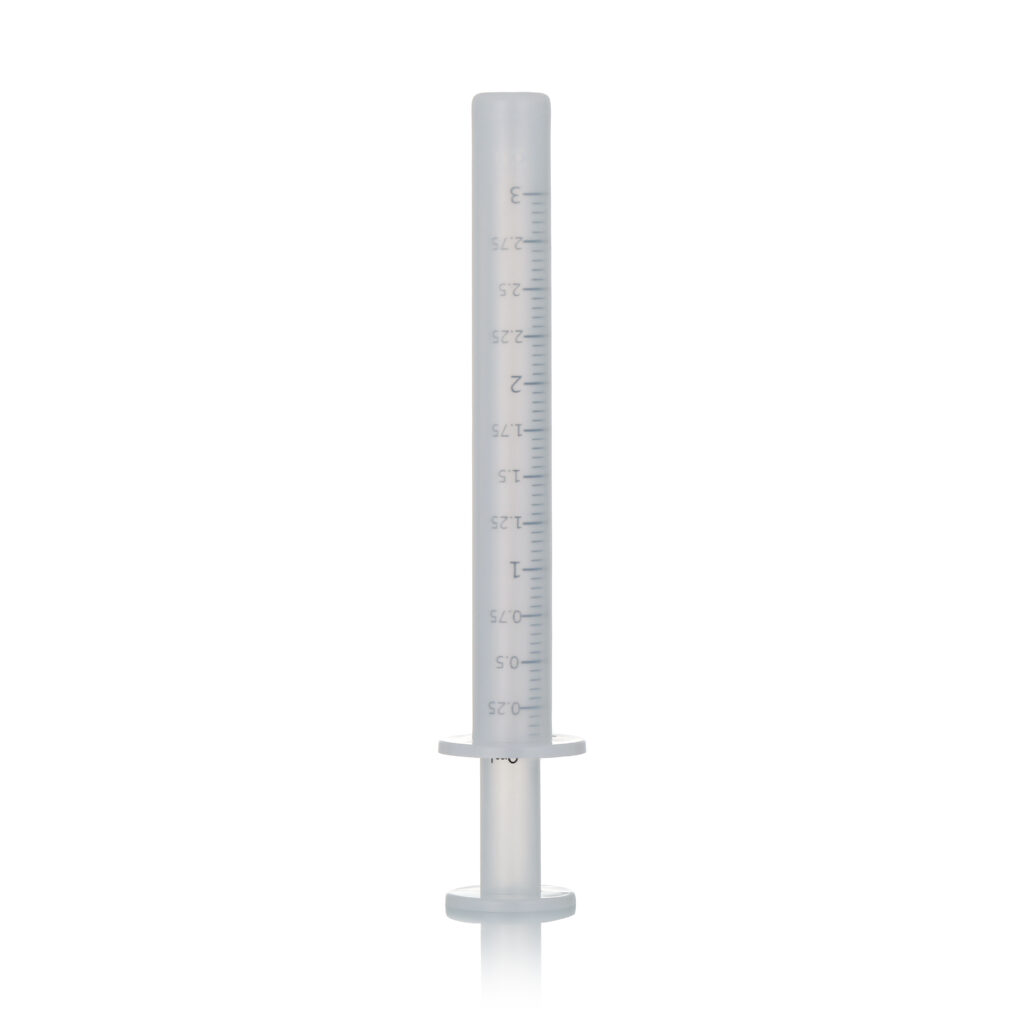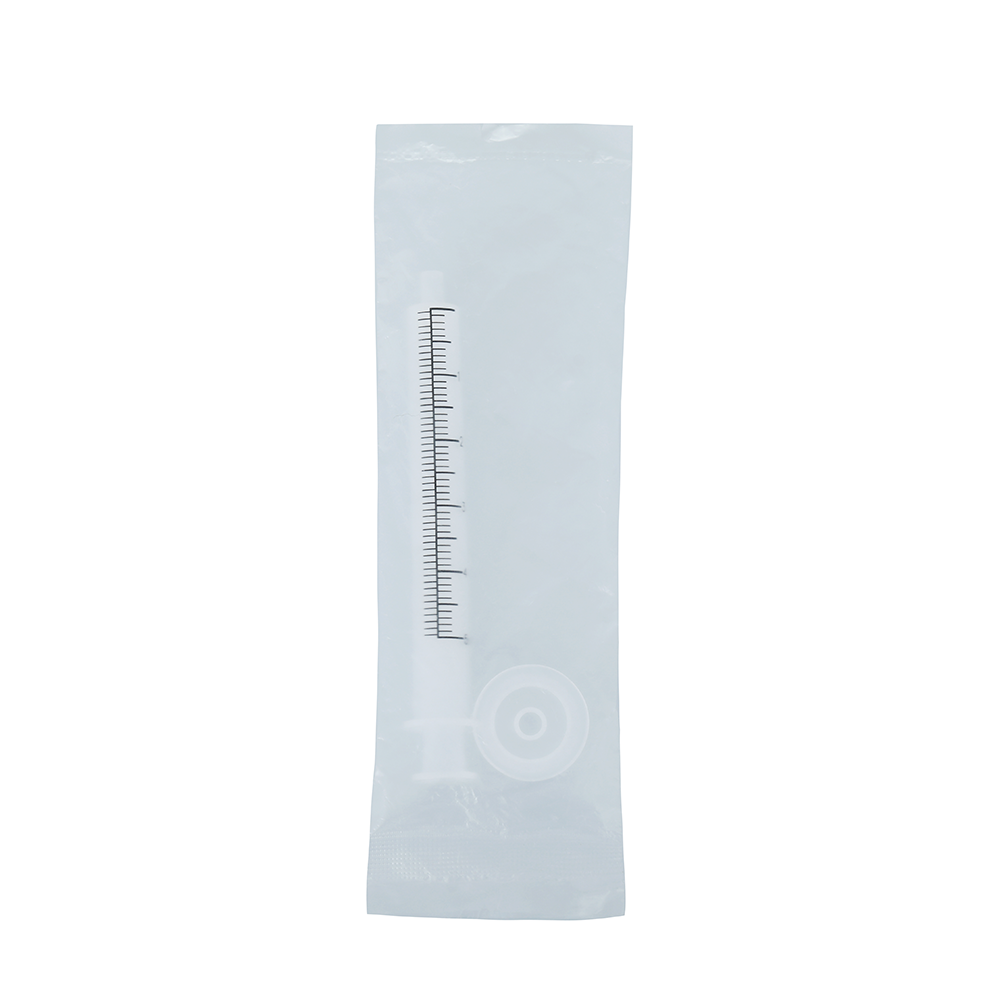Oral Dosing Pipette | Syringe

China Oral Syringe Manufacturer
We offer a comprehensive range of solutions to meet your needs. Our products comply with international regulations. Customization options are available for color and marking, including scale and unit of gradation. You can choose to have your brand logo and/or the medicine’s name on the packaging. Individual wrapping is also available upon request. Our materials are bio-compatible.
√ Capacity: 0.5ml, 1.25ml, 1.5ml, 3ml, 5ml, 10ml
√ Features: Tip and Non-Tip Options
√ Suitable for pediatric medicines, suspensions, or drinkable, THC, CBD Oil solutions
√ Plug DIN28 and DIN18 and sealing cap
√ Can be used upside down with a connector
√ Strong legibility and easy administration
√ Long lasting and easily recyclable
√ Individually wrapped on request
√ Very hygienic when used with a Press-In Bottle Adaptor (PIBA)
- Categories: Dosing
- Markets: Pharma, Healthcare, Vet&Pet Care
Browse All Secifications According to Your Needs
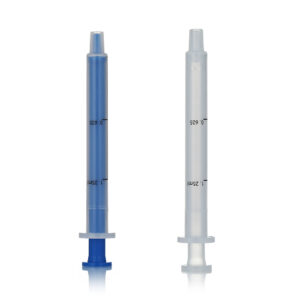
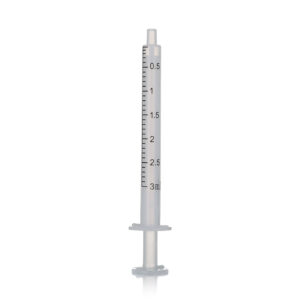
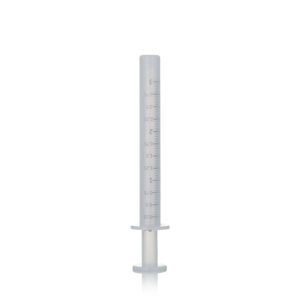

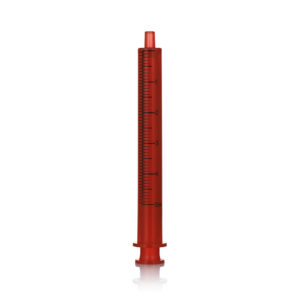
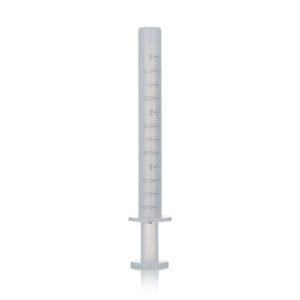
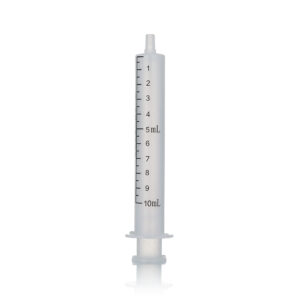
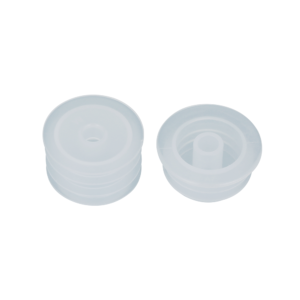

| Item No. | Capacity | Total Height | Nom.Diam |
|---|---|---|---|
| LYOS1 | 1.25ml | 82.6mm | 7.66mm |
| LYOS2 | 3ml (tip) | 113mm | 9.42mm |
| LYOS3 | 3ml (flat) | 96.88mm | 9.46mm |
| LYOS4 | 5ml (short form) | 85.6mm | 14.4mm |
| LYOS5 | 5ml (thin) | 107.74mm | 11.48mm |
| LYOS6 | 5ml (flat) | 112.48mm | 11mm |
| LYOS7 | 10ml | 116.44mm | 14.91mm |
Can you reuse oral syringes?
Generally, plastic syringes are designed to be single-use, although patients may be advised to reuse oral syringes in some instances. If an oral syringe is prescribed with medication or sold with over-the-counter medication, patients may be advised to wash the oral syringe after use and re-use it. Patients should always check with a medical professional before reusing a syringe and should only allow an oral syringe to be used by one person, rather than shared by family members, for example. However, in healthcare settings, it is not advisable to reuse oral syringes due to the risk of cross-contamination. If patients are being treated in a hospital or clinic, for example, oral syringes should be used only once and disposed of immediately.
What is the difference between oral syringes and injectable syringes?
Oral syringes are used to administer medication via the mouth, whereas injectable syringes are used alongside other equipment to administer medicine via other parts of the body. Both types of syringes should have clear markings on the barrel so that you can measure the amount of liquid in the syringe. Injectable syringes also typically have a threaded tip, so a needle can be attached to it for use in subcutaneous, intramuscular and intravenous injections, as well as other types of parenteral deliveries. Oral syringes don’t have threaded tips because no other equipment needs to be attached to them when medication is administered. However, there are various adapters which can be used with oral syringes to increase ease and accuracy when drawing liquid medicine in laboratory settings. Syringes are available in various sizes and colours, and physicians will select which size syringe is appropriate depending on how the medication is to be administered, what the relevant dose is and how thick the liquid is. Oral syringes are typically amber or orange in colour, although oral syringes which are capable of administering more than 10mls of liquid may be clear.
Are syringes different for children and adults?
Oral syringes come in various sizes and capacities depending on the medication dose required. As children are often prescribed lower dosages of medication than adults, smaller syringes may be used to administer their medicine. However, this is due to the amount of liquid being delivered, rather than being specifically due to the age of the patient.
What materials are used for oral syringes?
Oral syringes are predominantly made from plastic, with both the barrel, tip, and plunger being constructed from this material. The stopper, which sits inside the barrel on the end of the plunger, is usually made from rubber and is typically black in color. This contrast in colors helps to accurately measure medication when it is drawn up into the syringe, while the rubber stopper creates a complete seal within the barrel and prevents the medication from leaking.



